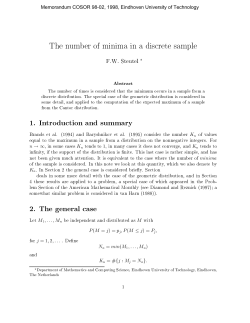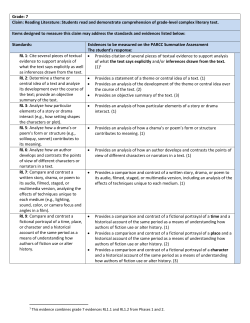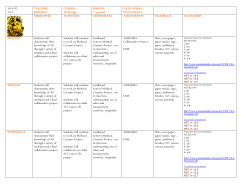
to view - Developing Open Dialogue
Open dialogues with clients with mental health problems and their families practitioners of some of the ways they are introducing the organisational principles of open dialogue and/or dialogical practices into their agency settings, and discussions of new UK-based trainings in the approach. There are also discussions of links between open dialogue and contemporary theatrical-approaches, while there are several contributions expanding the conversation with other therapeutic modalities, including narrative, psychoanalytic and mindfulness-based approaches. Although open dialogue was initially developed as a therapeutic approach to psychosis, it has much wider applications and this issue includes an account of an innovative network-based approach to helping a service user with learning difficulties. We are particularly delighted to include articles by Ray Middleton and Jan Kilyon, who write from their experiences of being a service user and a carer, calling for the wider adoption of dialogical approaches by services. References Alanen, Y.O. (1997) Schizophrenia: It’s Origins and Need-Adapted Treatment. London: Karnac. Andersen, T. (1990) (ed.) The Reflecting Team: Dialogues and Dialogues about the Dialogues. Kent, UK: Borgmann. Cooke, A. (2014) (ed.) Understanding Psychosis and Schizophrenia. British Psychological Society, Division of Clinical Psychology. bps.org.uk Laws, K., Langford, A. & Huda, S. (2014) Understanding Pychosis and Schizophrenia: A Critique. www.thementalelf.net Penn, P. (1999) Metaphors in regions of unlikeness. Human Systems, 10: 3-10. Speck, R.V. & Attneave, C.L. (1973) Family Networks. New York: Pantheon. 2 Open dialogues with clie and their families Jaakko Seikkula In a psychotic or other severe mental health crisis, it should be normal psychiatric practice for the fi rst meeting to take place within a day of hearing about the crisis. Furthermore, both the client and family should be invited to participate in the fi rst meeting and throughout the treatment process, for as long as is needed. In these meetings, all relevant professionals are invited to participate and openly share their thoughts and opinions about the crisis. They should stay involved for as long as help is needed. All discussions and treatment decisions should be made openly in the presence of the client and family. The fi rst aim is to generate a collaboration that tolerates the uncertainty of the crisis to mobilise the psychological resources of all involved. Starting medication should be discussed and decided openly as a part of this process. These are the basic guiding principles of the open-dialogue approach that originated in the Western part of Finnish Lapland. Its development started in the early 1980s and the open dialogue system has been going on now for about 30 years. In Finland, psychotherapeutic practice has long been part of public healthcare. Especially important has been the development and research undertaken in Turku by Yrjö Alanen and his team since the1960s. Starting with individual psychodynamic psychotherapy, the Turku team integrated family perspectives into their treatments in the late 1970s and called the approach need-adapted treatment (Alanen, 1997) in order to emphasise that every treatment process is unique and should be adapted to the varying needs of each client. Keränen, 1992; Seikkula et al., 2003; 2006; 2011). By summarising the observations in these studies, seven main principles of the system emerged: Immediate support; A social networks perspective; Flexibility and mobility; Responsibility; Psychological continuity; Tolerance of uncertainty; Dialogism. These principles came out of the research and were not planned before. Later on, more general ideas about good treatment were added. The approach is not diagnosis specific, but describes an entire networkbased treatment that is especially practical in crisis situations. Immediate response In a crisis, it is vital to act immediately and not to wait for the client with psychosis to become more coherent before a family meeting. It is preferable that the fi rst response be initiated within 24 hours, as this can prevent hospitalisation. The meeting is organised regardless of who fi rst contacted the response unit. In addition, a 24-hour crisis-service ought to be set up. Everyone, including the client, participates in the very fi rst meetings during the most intense psychotic period. The clients usually seem to be experiencing something that has been unappreciated or unacknowledged by the rest of the family. Although the clients’ comments may sound incomprehensible in the fi rst meetings, after a while, it becomes apparent they are actually speaking of real incidents in their lives. Often, these incidents include some terrifying issues, a threat or theme that they have not been Open dialogues in organising able to articulate before the crisis. Th is psychiatric practice is also the case in other forms of difficult From its very beginning, the openbehaviour. In extreme anger, depression or dialogue system has been based on anxiety, the client is speaking of previously rigorous evaluation of both the dialogical unspoken themes. In this way, the main processes in meetings with the clients and their families, and of the outcomes in crises person in the crisis, the client, reaches for (Aaltonen et al., 2011; Haarakangas, 1997; something that had not been touched by Context 138, April 2015 ents with mental health problems others in their surroundings. The aim of the treatment becomes the expression of these experiences that previously had no words, especially those that had not developed a shared language. During the fi rst couple of days of a crisis, it seems possible to speak of things that are difficult to discuss later. In the fi rst days, hallucinations may be handled and reflected upon, but they easily fade away, and the opportunity to deal with them may not reappear until after several months of individual therapy. It is as if the window for these extreme experiences only stays open for the fi rst few days. If the team manages to create a safe enough atmosphere by responding rapidly and listening carefully to all the themes the clients bring up, then important themes may fi nd a space where they can be handled and the prognosis improves. Context 138, April 2015 Flexibility Flexibility is guaranteed by adapting the treatment so that it is a response to the specific and changing needs of each client and his or her family, using the therapeutic methods best suited to each family, their specific language and their way of living. During the fi rst ten to twelve days of a crisis, the need is quite different compared with the need three weeks later. For instance, during the most acute phase, it is often advisable to meet every day, which is no longer necessary once the situation has stabilised. In that later period, families generally know how frequently they should be meeting. The best place for the meeting, if the family approves, might be the client’s home. Home meetings seem to prevent unnecessary hospitalisations, since the family’s own resources are more accessible in that sett ing (Keränen, 1992). In traditional psychiatry, families can easily refuse to participate in treatment. However, the need-adapted approach, with its emphasis on taking into account the uniqueness of each treatment process, has been more successful in engaging with families. Responsibility Organising a crisis service in a catchment area is difficult if all the professionals involved are not committed to providing an immediate response. A good rule of thumb is to follow the principle that whoever is contacted takes responsibility for organising the fi rst meeting and inviting the team. The person contacting the professional could be, for example, the client, a family member, or a referring practitioner. Th is means it is no longer possible to respond to a request for help by saying, “This has nothing to do with us, please contact the other clinic”. It is important to reassure the family member contacting the service that he or she has come to the right place and they will take care of organising a meeting. In the meetings, decisions are made as to who will best form the team that will be responsible for the treatment. In multiproblem situations, the best team is formed with professionals from different units; for instance, one from social care, one from a psychiatric outpatient clinic and one from the hospital ward. 3 Open dialogues with clients with mental health problems and their families Including the social network The clients, their relatives, and other key members of their social network are always invited to the fi rst meetings to mobilise support for the client and the family. Other key members may be representatives of other authorities such as state employment and insurance agencies, vocationalrehabilitation services, fellow workers or the supervisor at the client’s workplace, as well as neighbours or friends. Social networks can be seen as relevant in helping defi ne the problem. A problem is one that has been defi ned as such in the language of either those closest to the client or by the client him or her self. In the most severe crises, the fi rst notion of a problem often emerges in the defi nition of those closest to the client after they note that some forms of behaviour no longer conform to their expectations: for example, if a young member of the family is suspected of using drugs. The young person will seldom see using drugs as a problem, but parents can be terrified by it. From a network perspective, all these individuals should be included in the process. It is helpful to adopt a simple way of deciding who should be invited to meetings. It can be done, for instance, by asking the person who made contact in the crisis: 1. Who is concerned about the situation or who has been involved? 2. Who could be of help and is able to participate in the first meeting? 3. Who would be the best person to invite them, the one who contacted the services or the treatment team? By doing it this way, the participation of those closest to the client is suggested as part of an everyday conversation, which decreases any possible suspicion about the invitation. Also, the one who has made contact with the services can decide who is or isn’t present. If the proposal for a joint meeting is made officially, by asking, for instance, “Will you allow us to contact your family and invite them to a meeting?”, problems may arise in engaging both the clients and those close to them. Another factor in identifying the relevant participants is to fi nd out whether the clients have contacted any other professionals, either in connection with the current situation or previously. If the other professionals cannot attend the fi rst meetings, a joint meeting can be arranged later. The people in the client’s social network can be included in many ways. If they cannot be present, the client can be asked if they want to invite others who could possibly help. Some member of the network can be given the task of contacting them after the meeting and relaying the absent person’s comments to the next joint meeting. Those present can be asked, for instance, “What would Uncle Mark have said if he was present in this conversation? What would your answer be? And what would he say to that?” Open dialogues with clients with mental health problems and their families The team mobilised for the fi rst meeting should take responsibility for analysing the current problem and planning the treatment. Everything needed for an adequate response is available in the room; there is no other authority elsewhere that will know better what to do. Th is means all team members should take care of gathering the information they need for the best possible decisions to be made. If the doctor was not able to attend the meetings, they should be consulted by phone and, if there is a difference of opinion about certain decisions, a joint meeting is advisable to discuss the choices in the presence of the family. Th is empowers family members to participate more in the decision-making process. individual psychotherapist does not want to participate in the joint meetings. Th is can intensify the family’s suspicion towards the therapy, sometimes affecting the entire treatment process. Th is is particularly important in the case of children and adolescents. Tolerating uncertainty The fi rst task for professionals in a crisis is to increase the safety of the situation, when no one yet knows the reasons for the problem or the solutions for it. The aim is to mobilise the psychological resources of the client and those nearest to him or her so as to increase the agency in their own life, by generating new stories about their most extreme experiences and building up trust in the joint process. For instance, in a Guaranteeing psychological continuity psychotic crisis, meeting every day, at least The team takes responsibility for the for the fi rst ten to twelve days, can generate treatment for as long as needed in both an adequate sense of security. After this, outpatient and inpatient sett ings. Th is is meetings can be organised on a regular the best way to guarantee psychological basis according to the wishes of the family. continuity. Forming a multidisciplinary Usually, no detailed therapeutic contract team early increases the possibility of is made in the crisis phase but, instead, at crossing the boundaries of different every meeting it is decided if and when treatment-facilities and preventing people the next meeting will take place. In this dropping out. way, premature conclusions and treatment In the fi rst meeting, it is impossible to decisions are avoided. For instance, in the know how long the treatment will continue. fi rst psychotic crisis, neuroleptic drugs are In some instances, one or two meetings is not commenced during the fi rst few weeks. enough but, in others, intensive treatment Th is allows more time to understand the for two years may be needed. Problems problem and the whole situation. There is may occur if the crisis intervention team also time for spontaneous recovery where, meets three to five times and then refers in some cases, the problem can dissolve by the client to other authorities. In these itself. A recommendation for neuroleptic circumstances, even in the fi rst meetings, drugs should be discussed in at least three there is a danger of too much focus on meetings before implementation, to clarify actions to be taken and not enough on whether those present think the drugs are the process itself. Representatives of the necessary. On the whole, it is advisable to client’s social network participate in the see if psychosocial help through intensive treatment meetings for the entire treatment open-dialogue meetings is helpful in sequence, including when other therapeutic increasing safety and thus enabling the methods are applied. family to access their own resources to One part of psychological continuity is survive the crisis. If this is not enough, to integrate different therapeutic methods medication may be considered as an option into a cohesive treatment-process where after some weeks of therapy. different methods complement each other. Th is approach is in contrast to illnessFor instance, if individual psychotherapy is oriented approaches that focus on trying recommended for the client, psychological to remove symptoms with drugs during continuity is easily guaranteed by having the early phase of treatment. For psychotic one of the team members act as the clients, these are typically neuroleptics. individual psychotherapist. If this is not Psychiatric drugs can help, of course, possible or advisable, the psychotherapist but the risk is that they also decrease could be invited to one or two joint psychological resources. Neuroleptic drugs meetings, in which ideas are generated often have a sedative effect that calms that can serve as the basis for an individual psychological activity and thus may be a therapy process. Problems may occur if the hindrance to psychological work. In our 4 study, only 33% of acutely psychotic clients used neuroleptics at all during the five-year follow-up period. Besides the practical aspects of seeing that the family is not left alone with its problems, increasing safety means generating a quality in the therapeutic conversation such that everyone can be heard. Working as a team is one prerequisite in guaranteeing safety in a crisis with loaded emotions. One team member may start to listen more carefully to what the son says when he is saying he does not have any problems; it is his parents who may need the treatment. The other team member may become more interested in the family’s burden of not being successful at stopping his drug misuse. Already, in the very fi rst meeting, it is good to reserve some time for reflective discussion among the team in addition to these different or even contradictory perspectives. If the team members can listen to each other, it may increase the possibility for the family members also to listen to each other. Situations in which professionals are in a hurry to get to the next meeting and therefore propose a rapid decision, are not the best use of the family members’ psychological resources. It would be better to note that important issues have been discussed, but no fi rm conclusions can be made and thus the situation is defi ned as open. One way to put it into words might be, “We have now discussed this for about an hour, but we have not reached any firm conclusion of what this is all about or the best option to address it. However, we have discussed very important issues. Why not leave this open and continue tomorrow?” After that, concrete steps should be agreed before the next meeting to guarantee family members know what they should do if they need help. Dialogicity – promoting dialogue In meetings, the focus is primarily on promoting dialogue and only secondarily on promoting change in the client or in the family. Dialogue is seen as the forum through which families and clients are able to acquire more feeling of agency in their own lives through discussing their problems (Haarakangas, 1997). A new understanding is generated in dialogue (Andersen, 1995). Professionals have to become skilful in promoting dialogues through which their specific expertknowledge becomes rooted in the context. Context 138, April 2015 Open dialogues in the therapy meeting Context 138, April 2015 meetings can vary, but usually ninety minutes is adequate. Olson, Seikkula and Ziedonis (2014) have written a summary of key elements in open dialogue meetings and propose that the core aspects of the dialogues are: 1. Two (or more) therapists in the team meeting 2. Participation of family and network 3. Using open-ended questions 4. Responding to clients’ utterances 5. Emphasising the present moment 6. Eliciting multiple viewpoints 7. Use of a relational focus in the dialogue 8. Responding to problem discourse or behaviour in a matter-of-fact style and attentive to meanings 9. Emphasising the clients’ own words and stories, not symptoms 10. Conversation amongst professionals (reflections) in the treatment meetings 11. Being transparent 12. Tolerating uncertainty Effectiveness of the open-dialogue approach In Western Lapland, the effectiveness of open dialogue has been assessed in follow-up studies for fi rst-episode psychotic clients. The results compared with treatment-as-usual are promising. Clients diagnosed with schizophrenia were hospitalised significantly less compared with the treatment-as-usual group, an average of fourteen days per person compared with one hundred and seventeen over a two-year period (Seikkula et al., 2003). Only 33% used neuroleptics during some phase of treatment compared with 100% in the comparison group. Families were actively involved in all of the cases, having an average of twenty-six meetings over two years. When comparing outcomes, open-dialogue clients diagnosed with schizophrenia seem to recover better from their crises. At least one relapse occurred in 71% of the comparison group of clients compared with 24% in the opendialogue group. Only 17% of the opendialogue clients had at least occasional mild symptoms, compared with 50% in the comparison group. As many as 81% had returned to full employment compared with 43% in the comparison group. 5 Open dialogues with clients with mental health problems and their families the questioning and thus all staff members can participate in interviewing. On other The name ‘open dialogue’ was fi rst used occasions, the team can decide in advance in 1996 to describe the entire family and who will conduct the interview. social network-centred treatment process. The team does not plan the themes of It includes two aspects: fi rst, the meetings the meeting in advance. From the very described earlier in this article in which beginning the task of the interviewer(s) all relevant members participate from the is to adapt their answers to whatever the outset to generate new understanding by clients say. Most often, the team’s answer dialogue; secondly, the guiding principles takes the form of a further question that is based on, and has taken into account, for the entire system of psychiatric what the client and family members have practice in one geographic catchment said. Often, this means repeating wordarea. for-word some part of the utterance and The main forum for dialogues is the encouraging further dialogue on the treatment meeting where the major subject. If the client does not want to participants in the problematic situation participate in the meeting or suddenly join with the client to discuss all the runs out of the meeting room, we discuss relevant issues. According to Alanen carefully with the family members (1997), the treatment meeting has three whether or not to continue the meeting. functions: If the family wants to continue, a staff 1. To gather information about the member informs the client that she or problem; he can return if they want. During this 2. To build a treatment plan and make discussion, we do not make any other all decisions necessary on the basis of decisions concerning the client. the problem that was described in the Everyone present has the right to conversation; and comment whenever she or he is willing to 3. To generate a psychotherapeutic do so, but comments should not interrupt dialogue. an ongoing dialogue. Every new speaker On the whole, the focus is on should adapt his or her utterance to what strengthening the adult side of the client and on normalising the situation, instead was previously said. For the professionals, this means they can comment either of focusing on regressive behaviour. by inquiring further about the theme The starting point for treatment is the under discussion, or by asking the other language of the family, how each family professionals about their thoughts in has, in its own language, described the response to what is being said. Most oft en, client’s problem. Problems are seen as in those comments, specific phrases are a social construct and are reformulated introduced to describe the client’s most in every conversation (Shotter, 1993). difficult experiences. All present speak in their own voices. When the staff members have to remind The stance of the therapists is different from the traditional one in which it is the the family of their obligations and duties in this specific treatment-process, it is therapist who makes the interventions. advisable to focus on this toward the end While many family therapy schools are of the meeting, after family members especially interested in creating specific have spoken about what are the most forms of interviewing, in focusing on compelling issues for them. After deciding generating dialogue, listening and the important issues for the meeting responsively responding becomes have been addressed, the team member more important than the manner of interviewing. Team members can in charge suggests the meeting be closed. comment on what they hear with each It is important, however, to close the other as a reflective discussion, while the meeting by referring to the client’s own family listens (Andersen, 1995). words and by asking, for instance, “I The meeting takes place in an open wonder if we could begin to close the meeting. forum. All participants sit in a circle in the Before doing so, however, is there anything same room. The team members who have else we should discuss?” At the end of the taken the initiative for calling the meeting meeting it is helpful to summarise briefl y take charge of leading the dialogue. the themes of the conversation, especially On some occasions, there is no prior whether or not decisions have been made planning regarding who takes charge of and, if so, what they were. The length of Open dialogues with clients with mental health problems and their families At five-year follow-up (Seikkula et al., 2006), results were still positive, with 85% of the open-dialogue clients returning to their studies, work or to active job-seeking. These results have generated some criticism; for example, querying whether the cohort was selected so that only the easiest-to-treat psychotic clients were included. Partly in response to this criticism, but mainly out of interest to see if the results stayed the same, the design was repeated after ten years, including fi rst-episode psychotic clients who contacted the Western Lapland treatment system during 2003-2005 (Seikkula et al. 2011). The outcomes were the same as earlier. About 1/3 used antipsychotic medication and 84% had returned to full employment. For the most part, it could be verified that outcomes had stayed the same, but some interesting changes were noted. First of all, the group of psychotic clients in the 2000s seemed to be different, in the sense they were younger and included fewer with a schizophrenia diagnosis. The duration of untreated psychosis had declined to half a month, compared to 3.5 months during the 1990s. Secondly, differences occurred in the remaining psychotic symptoms, with fewer symptoms in the 2000s than in the 1990s. Other outcomes – including employment status – remained the same. However, in the third period, the relative proportion of brief psychotic episodes was higher than in the fi rst two groups. Together with the results of another study by Aaltonen et al. (2011), it was noted there has been a remarkable decline in schizophrenia in the Western Lapland province. In 1985, the incidence of schizophrenia was 33 new cases per 100,000 inhabitants, while a systematic analysis during ten years until 1994 noted a decline to 7 per 100,000 inhabitants. At 2005, the incidence was 2-3 per 100,000 inhabitants (Seikkula et al., 2011). Conclusions and reflections The results show open dialogue produces a remarkable change in the prognosis for severe mental illness. As one well-known professor of psychiatry noted in a personal communication, “We 6 have not previously seen any of these kinds of results with psychosis”. Th is suggests our approach to psychiatric crisis should change. We are used to thinking of psychosis as a sign of schizophrenia and schizophrenia as a relatively stable state that affects the client throughout his or her entire life. In the few long-term followup studies of fi rst-time psychotic clients, after fi ve years treated by traditional methods, more than a half are said to be living on a disability pension. The positive outcomes using the open-dialogue approach may indicate that psychosis no longer needs to be seen as a sign of illness, but can be viewed as one way of dealing with a crisis and, after this crisis, most people are capable of returning to their active social lives. And, given so few actually need neuroleptic drugs, we can ask whether our understanding of the underlying problem needs to change. New ways of thinking about psychoses have emerged through the introduction of open dialogues. Instead of primarily focusing on controlling symptoms with medication, attention can be focused on organising meetings for those involved, including family members and other relevant individuals from the personal social network and from professional networks. In these meetings we should be more interested in generating dialogues by following what family members are saying than in planning interventions aimed at change. If so, the training of professionals should be restructured to include these new aspects: not only to read books about medical interventions, but also to reflect upon the philosophy of how to generate dialogue and listen to people instead of dominating the therapeutic process. References Aaltonen, J., Seikkula, J. & Lehtinen, K. (2011) Comprehensive open-dialogue approach I: Developing a comprehensive culture of needadapted approach in a psychiatric public health catchment area the Western Lapland Project. Psychosis, 3: 179-191. Alanen, Y. (1997) Schizophrenia: Its Origins and Need-Adapted Treatment. London: Karnac. Andersen, T. (1995) Reflecting processes. Acts of informing and forming. In S. Friedman (ed.) The Reflective Team in Action. New York: Guilford. Haarakangas, K. (1997) Hoitokokouksen äänet. [The voices in treatment meeting. A dialogical analysis of the treatment meeting conversations in family-centred psychiatric treatment process in regard to the team activity. English Summary.] Jyväskylä Studies in Education, Psychology and Social Research, 130: 119-126. Keränen, J. (1992) The choice between outpatient and inpatient treatment in a family centred psychiatric treatment system. English summary. Jyväskylä Studies in Education, Psychology and Social Research, 93: 124-129. Olson, M., Seikkula, J. & Ziedonis, D. (2014) The Key Elements of Dialogic Practice in Open Dialogue. Worcester, MA:The University of Massachusetts Medical School. September 2. Version 1. Seikkula, J., Alakare, B., Aaltonen, J., Holma, J., Rasinkangas, A. & Lehtinen, V. (2003) Open dialogue approach: Treatment principles and preliminary results of a two-year follow-up on first episode schizophrenia. Ethical Human Sciences and Services, 5: 163-182. Seikkula, J., Aaltonen, J., Alakare, B., Haarakangas, K., Keränen, J. & Lehtinen, K. (2006) Five-year experience of first-episode nonaffective psychosis in open dialogue approach: Treatment principles, follow-up outcomes, and two case studies. Psychotherapy Research, 16: 214-228. Seikkula, J., Alakare, B., & Aaltonen, J. (2011) The comprehensive open-dialogue approach (II). Long-term stability of acute psychosis outcomes in advanced community care: The Western Lapland Project. Psychosis, 3: 192-204. Shotter, J. (1993) Conversational Realities: Constructing Life Through Language. London: Sage. Jaakko is a clinical psychologist and family therapist. From the early 1980s until 1998 he was a member of the team in Western Lapland in Finland developing the opendialogue approach. He is professor of psychotherapy at the University of Jyväskylä, Finland. Email: Jaakko.Seikkula@psyka.jyu.fi Context 138, April 2015
© Copyright 2025









